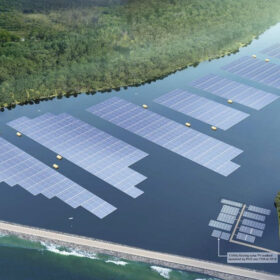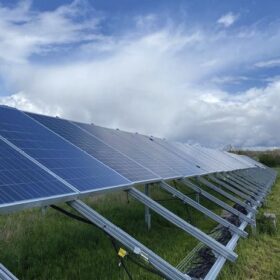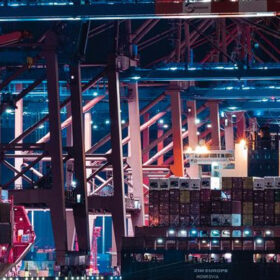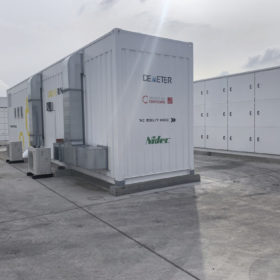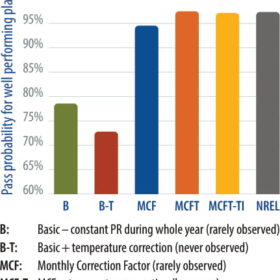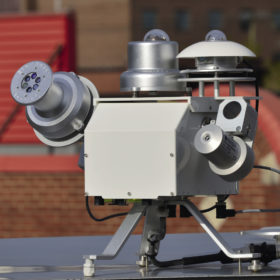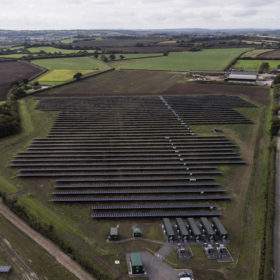Workforce dilemma casts long shadow
Solar industry expansion is racing ahead but shortages of skilled labor could derail progress. Long-term solutions are required to support further growth. Benoit Ribeaud, partner at Everoze, explores how a workforce bottleneck is affecting the solar industry and calls for more action to alleviate recruitment pressure.
The ‘next big thing’
The PV industry in Southeast Asia has come a long way since guest author Ragna Schmidt-Haupt, partner at Everoze, reported on solar financing innovation in the region more than a decade ago. In this article, she outlines five factors for success, the newest of which has the potential to become a game changer, and not only in Southeast Asia.
Known unknowns
Historic meteorological data is typically used to assess solar farm yield and secure project finance, but with climate change beginning to affect every aspect of society, past weather data may no longer be a reliable guide. Everoze Partner Nastasia Pacaut looks at how PV projects can be future-proofed in a changing climate.
Getting real on forced labor
While few can doubt the emission-reduction might of solar; forced- and child labor in clean power supply chains is becoming a hot issue, which is why the EU is mulling a ban on goods proven to have traces of such labor practices. Diana Zadorozhna, a partner at renewables consultancy Everoze, looks at what companies can do to prepare for forced-labor legislation.
Green hydrogen: A new entrant to the energy sector
Green hydrogen can play a vital role in decarbonizing the economy and enabling countries to reach net-zero emissions. The economics of producing green hydrogen from electrolysis are maturing as developers scramble to meet expected future demand. Everoze partner Nicolas Chouleur and Neoen hydrogen expert Sacha Lepoutre discuss a case study that shows how stacking different revenue streams could improve the economics of renewable energy projects.
The weekend read: A lifetime plan for your solar+storage asset
For developers and investors who are ready to start talking about solar+storage projects, there are some interesting and not so straightforward decisions to be made on the sizing of assets. Siobhán Green, lead on battery storage in continental Europe for Everoze, looks at the different approaches to sizing and how to choose between them. In particular, she assesses the ‘lifetime’ factors to dimensioning and discusses how to plan for degradation and potential through-life resets to the revenue stack.
We all trust the PV performance ratio test – but should we?
The performance ratio test is at the core of the handover from EPC to owner. Yet sometimes, even when best practice is applied – and without particularly demanding guaranteed values to be achieved – these tests fail good projects. This can lead to costly delays and wasted effort spent trying to find issues that might not exist. Everoze Partner Dario Brivio reviews the likelihood of this happening and considers ways to increase confidence in the precision of such tests, based on recent independent analysis of real-world projects.
Three factors for success in the Irish solar market
Recent years have seen an explosion of installed PV capacity across the European Union, fueled by the well-documented rapid reduction in technology costs and favorable subsidy regimes in many jurisdictions. However, one corner of Northern Europe remains relatively untouched by the solar revolution, writes Adam Sharpe of Everoze. The Republic of Ireland currently has the second-lowest amount of installed PV capacity in the European Union, at just 36 MW by the end of 2019.
How performance warranties protect revenues
Contracts to build solar PV plants usually contain a performance warranty to ensure that the owner receives an asset that delivers the agreed-upon minimum performance level. But can warranties and assessment methodologies guarantee that plant performance is being correctly assessed? The answer is not entirely straightforward, writes Felipe Canto Teixeira, a partner at Everoze.
Green shoots of recovery
There has been significant progress in the decarbonization of the electricity supply in Great Britain in recent years, underscored by a record run of 19 days of zero coal generation in May and June 2019. With National Grid’s stated aim of operating a carbon-neutral electricity system by 2025, the co-location of PV with battery storage could play a key role. The proposition offers the twin benefits of enabling increasingly high renewables penetration while simultaneously improving network stability. Adam Sharpe of Everoze explores the role of co-located PV and energy storage assets within the context of the UK’s future decarbonization plans.
